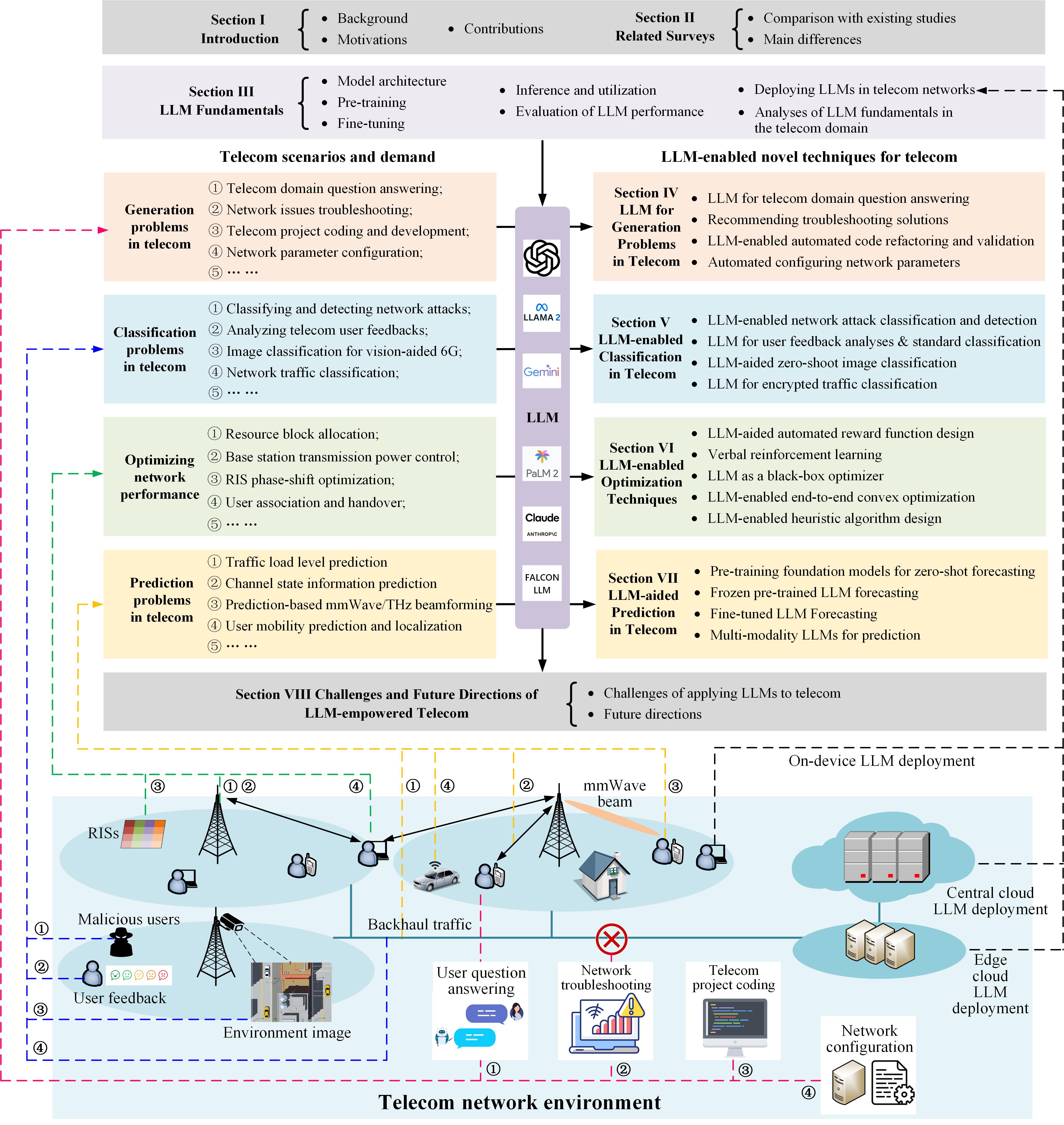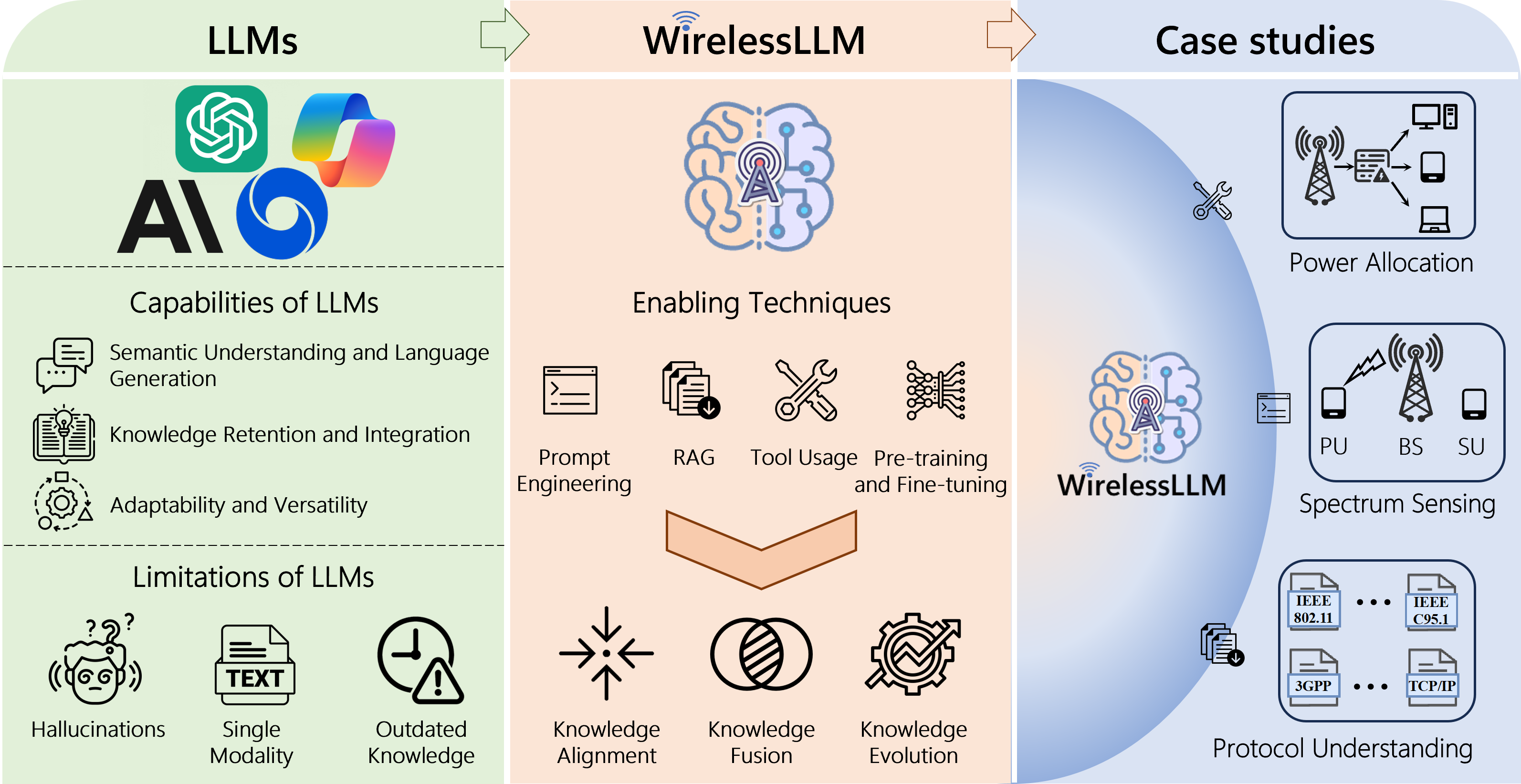Large Language Models for Networking: Workflow, Advances and Challenges
2404.12901

0
0

Abstract
The networking field is characterized by its high complexity and rapid iteration, requiring extensive expertise to accomplish network tasks, ranging from network design, configuration, diagnosis and security. The inherent complexity of these tasks, coupled with the ever-changing landscape of networking technologies and protocols, poses significant hurdles for traditional machine learning-based methods. These methods often struggle to generalize and automate complex tasks in networking, as they require extensive labeled data, domain-specific feature engineering, and frequent retraining to adapt to new scenarios. However, the recent emergence of large language models (LLMs) has sparked a new wave of possibilities in addressing these challenges. LLMs have demonstrated remarkable capabilities in natural language understanding, generation, and reasoning. These models, trained on extensive data, can benefit the networking domain. Some efforts have already explored the application of LLMs in the networking domain and revealed promising results. By reviewing recent advances, we present an abstract workflow to describe the fundamental process involved in applying LLM for Networking. We introduce the highlights of existing works by category and explain in detail how they operate at different stages of the workflow. Furthermore, we delve into the challenges encountered, discuss potential solutions, and outline future research prospects. We hope that this survey will provide insight for researchers and practitioners, promoting the development of this interdisciplinary research field.
Create account to get full access
Overview
- Explores the use of large language models (LLMs) in the field of computer networking
- Outlines a basic workflow for applying LLMs to networking tasks
- Discusses the latest advancements and ongoing challenges in this emerging research area
Plain English Explanation
Large language models (LLMs) are powerful artificial intelligence systems that can understand and generate human-like text. Researchers are exploring ways to apply these LLMs to the field of computer networking, which deals with the infrastructure and protocols that enable communication between devices on a network.
The paper describes a basic workflow for using LLMs in networking tasks. This involves gathering relevant data, fine-tuning the LLM on that data, and then applying the fine-tuned model to tackle specific networking challenges, such as network configuration, network troubleshooting, or network design.
The paper also highlights the latest advancements in this field, such as LLMs' ability to reason about mathematical concepts in networking and their potential applications in educational settings. However, there are still significant challenges to overcome, such as ensuring the reliability and robustness of LLM-based networking systems.
Technical Explanation
The paper presents a basic workflow for applying large language models (LLMs) to networking tasks, which consists of the following steps:
- Data Gathering: Collecting relevant networking data, such as configuration files, log files, and technical documentation, to build a dataset for fine-tuning the LLM.
- Fine-Tuning: Taking a pre-trained LLM and further training it on the networking dataset to imbue the model with domain-specific knowledge and skills.
- Deployment: Applying the fine-tuned LLM to tackle various networking challenges, such as configuration management, fault diagnosis, or network design.
The paper also discusses the latest advancements in this field, such as LLMs' ability to reason about mathematical concepts in networking and their potential applications in educational settings.
Critical Analysis
The paper provides a useful overview of the current state of research on applying large language models (LLMs) to networking tasks, but it also acknowledges several key challenges and limitations:
-
Reliability and Robustness: Ensuring the reliability and robustness of LLM-based networking systems is crucial, as these systems will need to operate in mission-critical environments. The paper notes that further research is needed to address issues such as model instability, security vulnerabilities, and the potential for adversarial attacks.
-
Interpretability and Explainability: LLMs can be complex and opaque "black boxes," making it difficult to understand how they arrived at a particular decision or recommendation. This lack of interpretability and explainability could be a barrier to the widespread adoption of LLM-based networking solutions, especially in safety-critical applications.
-
Data Availability and Quality: The performance of LLMs is heavily dependent on the quality and quantity of the training data. In the networking domain, the availability and quality of data may be a significant challenge, as much of the relevant information is often proprietary or scattered across various sources.
-
Domain-Specific Knowledge: While LLMs can be fine-tuned on networking data, they may still struggle to capture the deep, domain-specific knowledge that human networking experts possess. Bridging this gap will require innovative approaches to knowledge representation and transfer.
Overall, the paper highlights the significant potential of LLMs in the networking domain, but also cautions that there are still many obstacles to overcome before these models can be reliably deployed in real-world networking environments.
Conclusion
The paper explores the use of large language models (LLMs) in the field of computer networking, outlining a basic workflow for applying these powerful AI systems to networking tasks. The research demonstrates the potential of LLMs to enhance various networking capabilities, such as configuration management, fault diagnosis, and network design.
However, the paper also highlights the significant challenges that must be addressed, including ensuring the reliability and robustness of LLM-based networking systems, improving their interpretability and explainability, and overcoming the limitations of available networking data and domain-specific knowledge. Addressing these challenges will be crucial for the successful integration of LLMs into real-world networking environments.
As the field of large language models continues to evolve, the insights and insights presented in this paper will serve as a valuable resource for researchers and practitioners working at the intersection of AI and computer networking.
This summary was produced with help from an AI and may contain inaccuracies - check out the links to read the original source documents!
Related Papers
💬
NetLLM: Adapting Large Language Models for Networking
Duo Wu, Xianda Wang, Yaqi Qiao, Zhi Wang, Junchen Jiang, Shuguang Cui, Fangxin Wang

0
0
Many networking tasks now employ deep learning (DL) to solve complex prediction and system optimization problems. However, current design philosophy of DL-based algorithms entails intensive engineering overhead due to the manual design of deep neural networks (DNNs) for different networking tasks. Besides, DNNs tend to achieve poor generalization performance on unseen data distributions/environments. Motivated by the recent success of large language models (LLMs), for the first time, this work studies the LLM adaptation for networking to explore a more sustainable design philosophy. With the massive pre-trained knowledge and powerful inference ability, LLM can serve as the foundation model, and is expected to achieve one model for all with even better performance and stronger generalization for various tasks. In this paper, we present NetLLM, the first LLM adaptation framework that efficiently adapts LLMs to solve networking problems. NetLLM addresses many practical challenges in LLM adaptation, from how to process task-specific information with LLMs, to how to improve the efficiency of answer generation and acquiring domain knowledge for networking. Across three networking-related use cases - viewport prediction (VP), adaptive bitrate streaming (ABR) and cluster job scheduling (CJS), we demonstrate the effectiveness of NetLLM in LLM adaptation for networking, and showcase that the adapted LLM significantly outperforms state-of-the-art algorithms.
5/7/2024
💬
When Large Language Models Meet Optical Networks: Paving the Way for Automation
Danshi Wang, Yidi Wang, Xiaotian Jiang, Yao Zhang, Yue Pang, Min Zhang

0
0
Since the advent of GPT, large language models (LLMs) have brought about revolutionary advancements in all walks of life. As a superior natural language processing (NLP) technology, LLMs have consistently achieved state-of-the-art performance on numerous areas. However, LLMs are considered to be general-purpose models for NLP tasks, which may encounter challenges when applied to complex tasks in specialized fields such as optical networks. In this study, we propose a framework of LLM-empowered optical networks, facilitating intelligent control of the physical layer and efficient interaction with the application layer through an LLM-driven agent (AI-Agent) deployed in the control layer. The AI-Agent can leverage external tools and extract domain knowledge from a comprehensive resource library specifically established for optical networks. This is achieved through user input and well-crafted prompts, enabling the generation of control instructions and result representations for autonomous operation and maintenance in optical networks. To improve LLM's capability in professional fields and stimulate its potential on complex tasks, the details of performing prompt engineering, establishing domain knowledge library, and implementing complex tasks are illustrated in this study. Moreover, the proposed framework is verified on two typical tasks: network alarm analysis and network performance optimization. The good response accuracies and sematic similarities of 2,400 test situations exhibit the great potential of LLM in optical networks.
6/26/2024

Large Language Model (LLM) for Telecommunications: A Comprehensive Survey on Principles, Key Techniques, and Opportunities
Hao Zhou, Chengming Hu, Ye Yuan, Yufei Cui, Yili Jin, Can Chen, Haolun Wu, Dun Yuan, Li Jiang, Di Wu, Xue Liu, Charlie Zhang, Xianbin Wang, Jiangchuan Liu

0
0
Large language models (LLMs) have received considerable attention recently due to their outstanding comprehension and reasoning capabilities, leading to great progress in many fields. The advancement of LLM techniques also offers promising opportunities to automate many tasks in the telecommunication (telecom) field. After pre-training and fine-tuning, LLMs can perform diverse downstream tasks based on human instructions, paving the way to artificial general intelligence (AGI)-enabled 6G. Given the great potential of LLM technologies, this work aims to provide a comprehensive overview of LLM-enabled telecom networks. In particular, we first present LLM fundamentals, including model architecture, pre-training, fine-tuning, inference and utilization, model evaluation, and telecom deployment. Then, we introduce LLM-enabled key techniques and telecom applications in terms of generation, classification, optimization, and prediction problems. Specifically, the LLM-enabled generation applications include telecom domain knowledge, code, and network configuration generation. After that, the LLM-based classification applications involve network security, text, image, and traffic classification problems. Moreover, multiple LLM-enabled optimization techniques are introduced, such as automated reward function design for reinforcement learning and verbal reinforcement learning. Furthermore, for LLM-aided prediction problems, we discussed time-series prediction models and multi-modality prediction problems for telecom. Finally, we highlight the challenges and identify the future directions of LLM-enabled telecom networks.
5/20/2024

WirelessLLM: Empowering Large Language Models Towards Wireless Intelligence
Jiawei Shao, Jingwen Tong, Qiong Wu, Wei Guo, Zijian Li, Zehong Lin, Jun Zhang

0
0
The rapid evolution of wireless technologies and the growing complexity of network infrastructures necessitate a paradigm shift in how communication networks are designed, configured, and managed. Recent advancements in Large Language Models (LLMs) have sparked interest in their potential to revolutionize wireless communication systems. However, existing studies on LLMs for wireless systems are limited to a direct application for telecom language understanding. To empower LLMs with knowledge and expertise in the wireless domain, this paper proposes WirelessLLM, a comprehensive framework for adapting and enhancing LLMs to address the unique challenges and requirements of wireless communication networks. We first identify three foundational principles that underpin WirelessLLM: knowledge alignment, knowledge fusion, and knowledge evolution. Then, we investigate the enabling technologies to build WirelessLLM, including prompt engineering, retrieval augmented generation, tool usage, multi-modal pre-training, and domain-specific fine-tuning. Moreover, we present three case studies to demonstrate the practical applicability and benefits of WirelessLLM for solving typical problems in wireless networks. Finally, we conclude this paper by highlighting key challenges and outlining potential avenues for future research.
6/18/2024